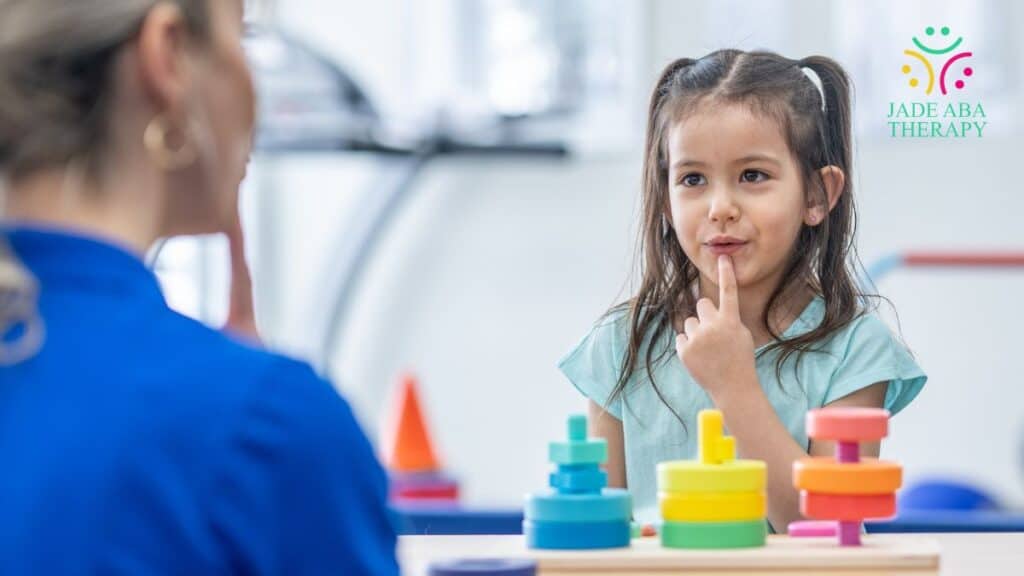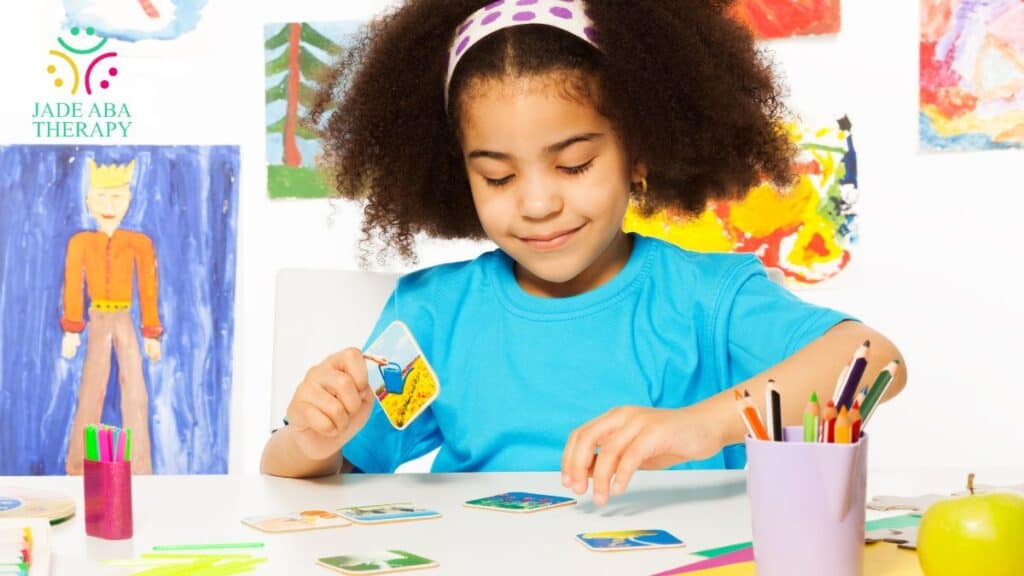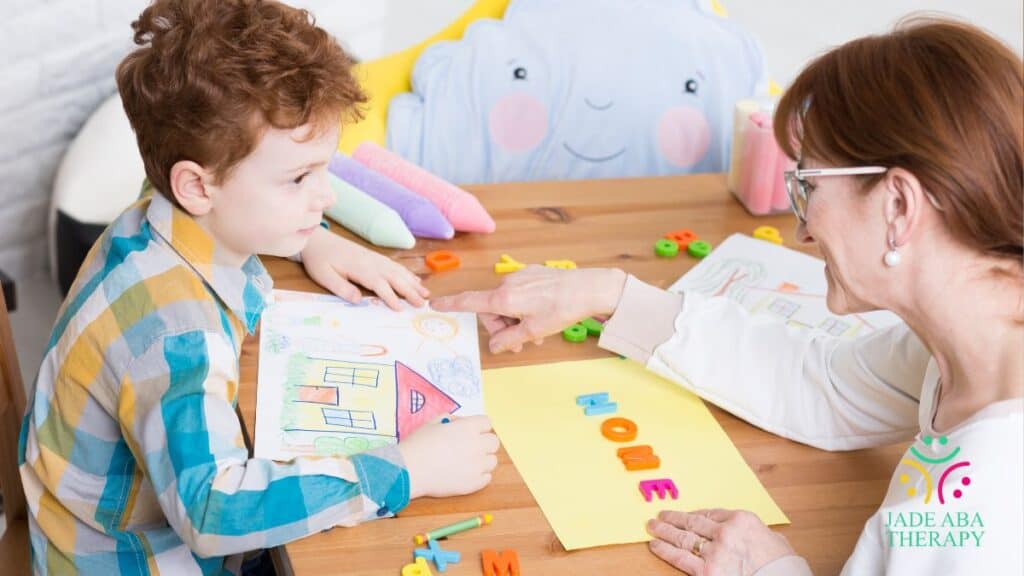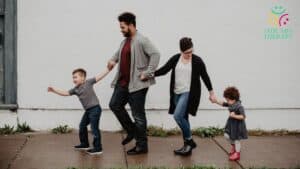Key Points:
- Signs ABA therapy is working include more functional communication, fewer meltdowns, and skills that generalize to home, school, and community.
- Data should show clear upward trends, and families should see practical coaching they can use daily.
- Progress appears in weeks for small steps and months for broader gains.
When parents or caregivers search for “signs ABA therapy is working,” they often want clear evidence that all the time, effort, and cost are paying off. They wonder, “Is ABA therapy for autism really helping my child?” or “How long until results show up?”
Applied behavior analysis focuses on skills that change daily life. Parents want fewer meltdowns, calmer routines, and communication that works outside sessions. This guide explains what to look for and how to judge real momentum rather than hoping for sweeping change that never comes.

Communication Becomes More Functional
Communication growth shows early and drives many other gains. Applied behavior analysis builds functional communication and alternatives to problem behavior.
Families should see communication expand in places that matter to them. That can start as gestures or picture exchange and grow into words, phrases, or device use. The exact modality matters less than usefulness.
Look for these indicators after a few weeks of consistent sessions:
- Requests that work: Child asks for “help,” “break,” or items rather than crying or grabbing.
- Comments that connect: Child shares attention (“look,” “open,” “push”) during play or routines.
- Responses that hold: Child follows one-step directions from more than one person.
- Modes that fit: Program uses pictures, signs, words, or AAC that match motor and cognitive strengths.
- Coaching that sticks: Caregivers get simple prompts to cue language in the bathroom, kitchen, car, and playground.
Challenging Behavior Drops Because Needs Are Met
Challenging behavior often serves a function. ABA therapy identifies that function and replaces it with a communication response that gets the same outcome. Functional Communication Training (FCT) is a core method here.
When FCT is done well, families see fewer dangerous behaviors and more safe requests for breaks, attention, help, or access to items, and ABA therapy for challenging behaviors shows how teams coach these responses at home.
A randomized controlled trial of FCT delivered via telehealth found a mean 98% reduction in problem behavior over 12 weeks compared with minimal change in “treatment as usual.” That result highlights how teaching the right replacement skill can transform safety and family routines.
Here are some of the signs to watch across typical flashpoints like meals, screen time, and transitions:
- Clear function match: Replacements directly access the same outcome (breaks, help, attention, item).
- Short prompts: Adults use brief, consistent cues rather than long lectures.
- Faster calm: Escalations shrink in length and intensity; recovery takes minutes, not hours.
- Safer patterns: Bolting, aggression, or self-injury drop in frequency and severity.
- General rules: Child starts to wait, tolerate “not now,” and accept short delays when a replacement is reinforced.
Parents who also search “aba therapy near me” or “aba therapy techniques” usually need relief in daily routines. FCT plus simple prevention strategies (schedules, choice, first-then) should show visible change early. Good teams share scripts you can try the same day and refine the next.
Skills Generalize Beyond the Therapy Table
Progress counts when it shows up outside therapy. Generalization of skills in ABA therapy means a skill works with new people, in new places, and under new demands. Signs ABA therapy is working include seeing a child use the same request at home, in the car, and at a store, or following a routine with grandparents after practicing with parents.
Therapists should plan for generalization from day one. That involves varying materials, people, and locations. Families should see coaching that targets the child’s real environments: bathroom, kitchen, bedroom, playground, and classroom.
Use this quick generalization check:
- People: Child uses the skill with caregivers, siblings, teachers, and peers.
- Places: Skill holds at home, school, park, and store—not just at a therapy table.
- Props: Child performs with different cups, spoons, shoes, or toys rather than only one set.
- Prompts: Help fades across weeks; independence grows; reinforcement becomes more natural.
- Durability: Skill shows up after a weekend off or during travel, not only after warm-up trials.
Data Trends Move in the Right Direction
Solid ABA therapy programs define clear targets and track trials, latency, duration, and accuracy through practical data collection families can understand. Families should receive simple visuals that summarize baseline, weekly progress, and current performance. Data should answer “What changed?” and “Is this meaningful at home?”
Good data are easy to understand. Graphs mark when procedures changed so you can connect the dots with real life. Therapists should invite caregiver input on what counts as success, then show it.
Check the quality of your program’s data:
- Plain goals: Each target is specific, observable, and relevant to daily life.
- Visible change: Graphed data show clear upward trends or reduced problem behavior.
- Regular review: Team meets every 2–4 weeks to analyze and update targets.
- Meaningful metrics: Measures map to what families want (e.g., store trips without a cart, meals under 30 minutes).
- Open records: Caregivers can see raw data and summaries on request.
Hours vs Results: Why Fit and Teaching Quality Predict Progress
Families hear a lot about “20–40 hours.” Intensity is important, but time alone does not guarantee results.
A 2024 meta-analysis of 144 studies covering 9,038 children found no significant association between intervention amount (daily intensity, duration, or cumulative hours) and intervention effects once study quality and outcome type were accounted for. Quality of teaching, goal relevance, and caregiver involvement predicted more.
That finding helps parents choose the right provider who emphasizes teaching quality, fit, and coaching. The right questions center on who teaches, how they teach, and how fast the plan pivots when data stalls.
Use these practical screens when judging fit:
- Goal alignment: Targets match your top three priorities and change when life changes.
- High-quality trials: Teaching uses short trials, clear prompts, and quick reinforcement.
- Error correction: Staff repair errors fast and keep motivation high.
- Coaching dose: Caregivers receive weekly practice and usable take-home steps.
- Rapid pivots: Team changes procedures when progress flattens for 2–3 reviews.
ABA Therapy Examples and Techniques You Should See in Action
Sessions should include clear advanced ABA techniques you can observe and repeat. Variety is important because children learn differently across tasks and settings. You should see a mix of structured and naturalistic approaches, short prompted trials, and chances to practice with siblings or classmates.
Expect these ABA therapy examples to appear across your week:
- Functional Communication Training (FCT): Teach a replacement request for breaks, help, attention, or items; reinforce it fast.
- Naturalistic Developmental Behavioral Interventions: Embed language and play goals into daily routines; follow the child’s lead; model and expand.
- Discrete Trial Teaching (DTT): Use short, clear trials for new or hard skills; rotate tasks to maintain engagement.
- Task analysis with chaining: Break complex routines (toothbrushing, dressing) into steps; teach forward or backward; fade prompts.
- Token economies or point systems: Motivate longer tasks with earned rewards; tie tokens to specific behaviors and clear exchange rules.
- Tolerance and delay training: Teach “wait,” short denials, and flexible transitions that reduce protests.
Applied behavior analysis is broad. Good teams explain why a technique is chosen, how success is defined, and when the plan will shift. Families should feel equipped to run mini-sessions between visits. That is where durable change forms.

Is ABA Therapy Only for Autism? What to Expect
ABA is a science of behavior, used in many fields. Insurance-funded “ABA therapy for autism” remains the most common route for families seeking help, and prevalence data explain why services are widespread. In 2022, autism prevalence among U.S. 8-year-olds was 32.2 per 1,000 or about 1 in 31 based on surveillance across multiple sites.
That figure does not make ABA exclusive to autism. It does explain why many clinics build autism-focused teams and why common targets include language, play, adaptive skills, and safety.
Use these expectations during intake:
- Clear assessment: Team runs interviews, observations, and preference assessments that feed specific goals.
- Flexible mix: Sessions include natural play, structured practice, and community outings when appropriate.
- School teaming: Staff coordinate with teachers and related services so skills transfer across settings.
- Caregiver role: Parents receive step-by-step coaching, not vague tips.
- Outcome focus: Targets favor independence and safety over isolated table tasks.
How to Tell It’s Time to Adjust the Plan
Even good plans stall. Teams should catch plateaus early and troubleshoot fast. Families should watch for warning signs that suggest a pivot, not a pause. Use these pivot signals:
- Stalled trends: Data hover without gains for two or more review cycles.
- Prompt dependence: Independence does not grow; child waits for help to respond.
- Setting bound: Skill appears only in one room or only with one person.
- Avoidance spikes: Child resists practice, showing the tasks feel too hard or unrewarding.
- Family mismatch: Goals no longer fit daily needs; routines changed; priorities shifted.
Bring specific notes to the next team meeting, and ask how caregiver training will support changes between visits. Ask to revise goals, refresh teaching procedures, or narrow the target so success becomes likely again. Families searching “aba therapy near me” can also ask prospective providers how they handle plateaus and how quickly they change course.
Frequently Asked Questions
How long does it take to see results from ABA therapy?
ABA therapy can show small skill gains in weeks to months, especially with frequent practice on targeted steps. Broader improvements in language, cognition, and adaptive skills usually emerge over 6–24 months. Intensive programs of 20–40 hours weekly across 1–2+ years produce the strongest, lasting outcomes.
At what age is ABA most effective?
ABA therapy is most effective when started early, typically between 12 and 48 months. Evidence from the Early Start Denver Model shows gains in IQ, language, and adaptive behavior over two years. Screening at 18 and 24 months and beginning intervention as soon as delays appear maximizes progress.
At what age do you stop ABA therapy?
ABA therapy stops when goals are met, skills generalize, or progress plateaus despite adjustments, not at a fixed age. Discharge criteria are set early and reviewed regularly. Many children transition to school-based supports from age 3–21, with ABA shifting to consultation or targeted interventions.
Start Seeing Progress at Home
In-home ABA therapy for children with autism in Maryland and Virginia centers on clear goals, consistent practice, and weekly data you can review. Jade ABA Therapy partners with caregivers to coach everyday routines, adjust plans when progress slows, and make wins visible, meaning more communication, fewer meltdowns, and stronger follow-through.
If you’re ready to see the signs ABA therapy is working, schedule a consultation today so we can set measurable targets, share transparent updates, and support your child’s growth where it counts most: at home.




